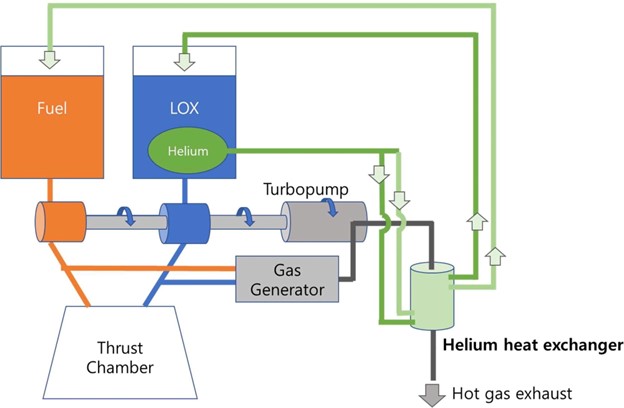 Writing in the journal Cryogenics, a team of scientists from the Korea Aerospace Research Institute has evaluated the performance of a helium heat exchanger for launch vehicles. Performance was evaluated under real engine operating conditions.
Writing in the journal Cryogenics, a team of scientists from the Korea Aerospace Research Institute has evaluated the performance of a helium heat exchanger for launch vehicles. Performance was evaluated under real engine operating conditions.
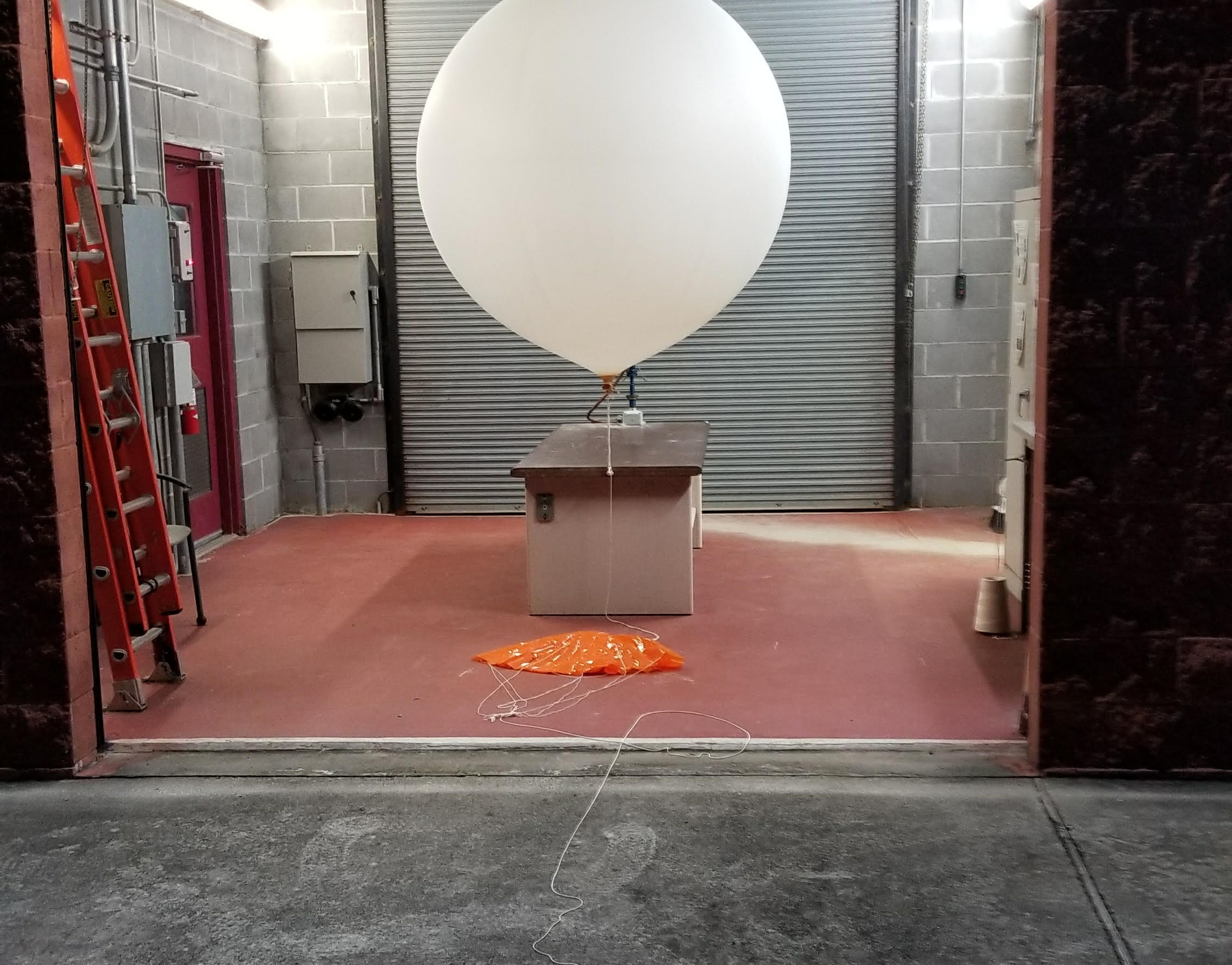 In the basement of the University of New Mexico’s chemistry building, Karen Smith punched in the code to get into the lab she manages. Inside, three white cylinders on blue legs that looked sort of like nine-foot-tall cousins of R2-D2 were humming away. “You’re going to want to stay fairly close to the door,” Smith said. “In case the powerful magnets inside those instruments could mess with my recording equipment. These magnets are donuts of wire, and because they’re sitting in liquid helium, they’ve got a lot of electricity running through them, which means they can generate very strong magnetic fields.”
In the basement of the University of New Mexico’s chemistry building, Karen Smith punched in the code to get into the lab she manages. Inside, three white cylinders on blue legs that looked sort of like nine-foot-tall cousins of R2-D2 were humming away. “You’re going to want to stay fairly close to the door,” Smith said. “In case the powerful magnets inside those instruments could mess with my recording equipment. These magnets are donuts of wire, and because they’re sitting in liquid helium, they’ve got a lot of electricity running through them, which means they can generate very strong magnetic fields.”
Read More
Cryogenic Pumps for Research
 Vanzetti Engineering’s cryogenic pumps have been chosen for the Aria Project of the National Institute of Nuclear Physics (INFN) in partnership with Carbosulcis S.p.A., a company owned by the Sardinia Region. The Aria Project involves the construction of a cryogenic distillation tower in Sardinia, Italy, for the production of high purity enriched stable isotopes. The project is an integral part of the DarkSide-20k experiment that will be carried out at the Gran Sasso National Laboratories (LNGS) of the National Institute for Nuclear Physics (INFN), the objective of which is to detect dark matter directly. Dark matter, the nature of which is still unknown, represents most of the matter that makes up our universe, where it is five times more abundant than ordinary matter that makes up everything we can see today. Understanding its nature is therefore one of the main areas of research in the field of fundamental physics, as it would make a significant contribution to the understanding of cosmology, physics and astrophysics.
Vanzetti Engineering’s cryogenic pumps have been chosen for the Aria Project of the National Institute of Nuclear Physics (INFN) in partnership with Carbosulcis S.p.A., a company owned by the Sardinia Region. The Aria Project involves the construction of a cryogenic distillation tower in Sardinia, Italy, for the production of high purity enriched stable isotopes. The project is an integral part of the DarkSide-20k experiment that will be carried out at the Gran Sasso National Laboratories (LNGS) of the National Institute for Nuclear Physics (INFN), the objective of which is to detect dark matter directly. Dark matter, the nature of which is still unknown, represents most of the matter that makes up our universe, where it is five times more abundant than ordinary matter that makes up everything we can see today. Understanding its nature is therefore one of the main areas of research in the field of fundamental physics, as it would make a significant contribution to the understanding of cosmology, physics and astrophysics.
Read More
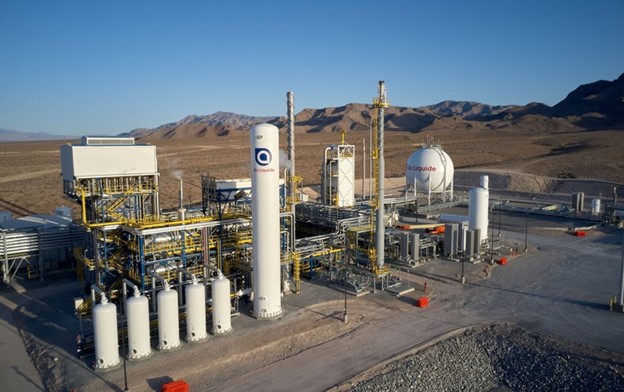 Oxygen, nitrogen and hydrogen are essential small molecules for life, matter and energy. They embody Air Liquide’s scientific territory and have been at the core of the company’s activities since its creation in 1902. A world leader in gases, technologies and services for industry and health, Air Liquide’s ambition is to deliver long-term performance and contributions to sustainability, with a strong commitment to climate change and energy transition at the heart of its strategy.
Oxygen, nitrogen and hydrogen are essential small molecules for life, matter and energy. They embody Air Liquide’s scientific territory and have been at the core of the company’s activities since its creation in 1902. A world leader in gases, technologies and services for industry and health, Air Liquide’s ambition is to deliver long-term performance and contributions to sustainability, with a strong commitment to climate change and energy transition at the heart of its strategy.
Read More
Artemis I Mission Availability
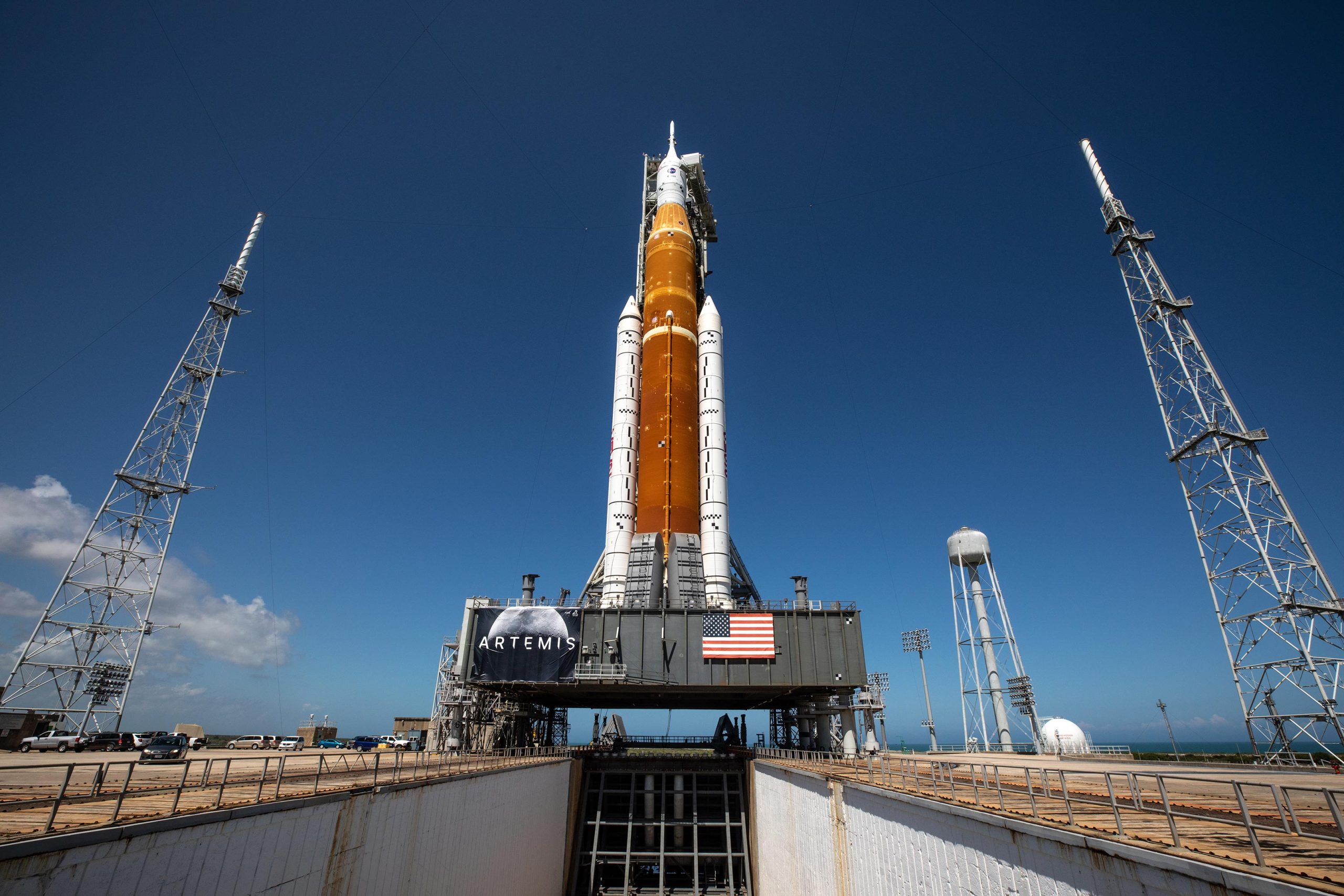 When Artemis I is ready to launch, a range of personnel from NASA, industry, and several international partners will be poised to support the mission. Before they get to launch day, the alignment of the earth and moon will determine when the Space Launch System (SLS) rocket with the uncrewed Orion spacecraft atop it can launch, along with several criteria for rocket and spacecraft performance.
When Artemis I is ready to launch, a range of personnel from NASA, industry, and several international partners will be poised to support the mission. Before they get to launch day, the alignment of the earth and moon will determine when the Space Launch System (SLS) rocket with the uncrewed Orion spacecraft atop it can launch, along with several criteria for rocket and spacecraft performance.
Read More
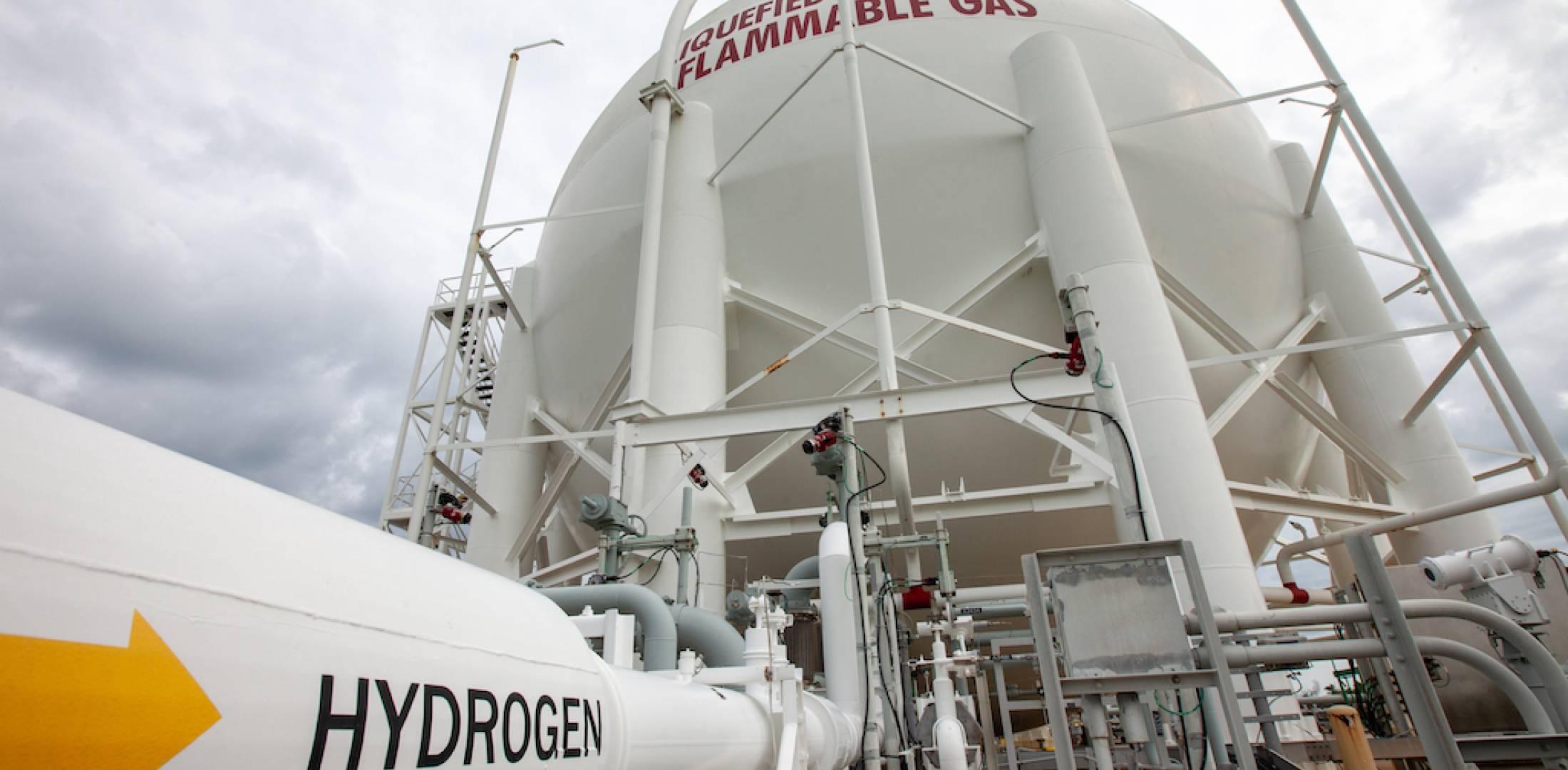 Of all the various renewable energy sources under development, hydrogen represents the so-called “holy grail” in the effort to eliminate carbon emissions from future aircraft, say many scientists. But while the technology exists today to build a hydrogen-powered aircraft, prompting several startup enterprises to develop fuel-cell-based vehicles for the burgeoning advanced air mobility industry, scaling the production and distribution of hydrogen for the wider air transport market presents its own set of challenges.
Of all the various renewable energy sources under development, hydrogen represents the so-called “holy grail” in the effort to eliminate carbon emissions from future aircraft, say many scientists. But while the technology exists today to build a hydrogen-powered aircraft, prompting several startup enterprises to develop fuel-cell-based vehicles for the burgeoning advanced air mobility industry, scaling the production and distribution of hydrogen for the wider air transport market presents its own set of challenges.
Read More
 Airbus has announced that it is launching a facility based in the United Kingdom, where a new cryogenic hydrogen tank will be developed for its next generation of aircraft. The UK facility in Filton, Bristol has already started working on the technology’s development.
Airbus has announced that it is launching a facility based in the United Kingdom, where a new cryogenic hydrogen tank will be developed for its next generation of aircraft. The UK facility in Filton, Bristol has already started working on the technology’s development.
Read More
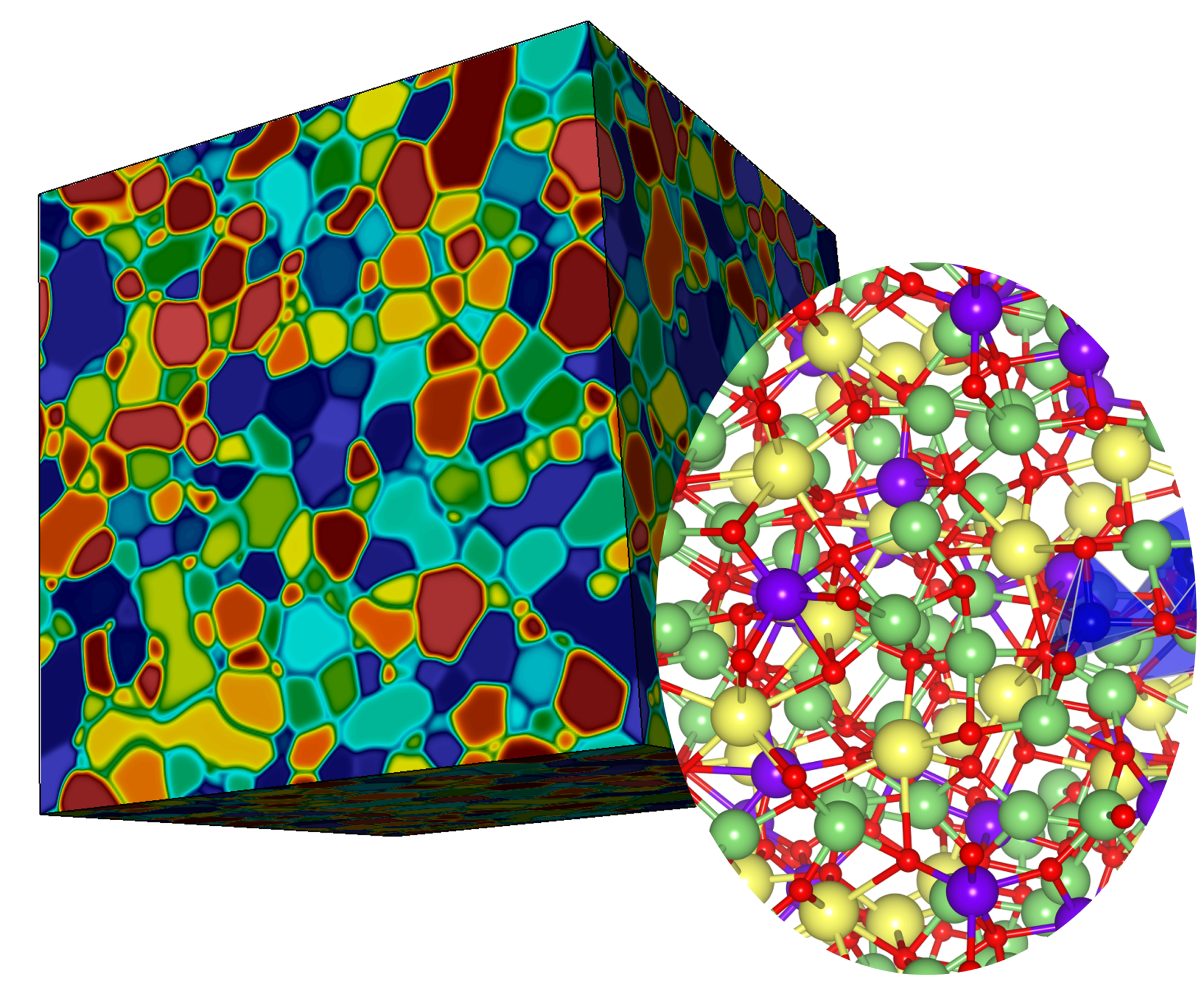 Perfection is a problem when it comes to how computers model materials for energy applications. Although a typical model assumes materials are perfect, in reality they have flaws at their interfaces and boundaries. At Lawrence Livermore National Laboratory, researchers simulate ion transport for ways to predict and improve materials for energy storage.
Perfection is a problem when it comes to how computers model materials for energy applications. Although a typical model assumes materials are perfect, in reality they have flaws at their interfaces and boundaries. At Lawrence Livermore National Laboratory, researchers simulate ion transport for ways to predict and improve materials for energy storage.
Read More
QED-C® Announces Four Projects Designed to Advance Cryogenics for Quantum Information Science and Technology
 The Quantum Economic Development Consortium (QED-C), managed by SRI International, in strategic partnership with the U.S. Department of Commerce's National Institute of Standards and Technology (NIST), today announced a $2.3 million research program to advance cryogenic technologies that will enable innovation in quantum information science and technology (QIST). The program aims to address gaps identified by QED-C members as barriers to progress in applications of QIST for computing, networking and communication and sensing.
The Quantum Economic Development Consortium (QED-C), managed by SRI International, in strategic partnership with the U.S. Department of Commerce's National Institute of Standards and Technology (NIST), today announced a $2.3 million research program to advance cryogenic technologies that will enable innovation in quantum information science and technology (QIST). The program aims to address gaps identified by QED-C members as barriers to progress in applications of QIST for computing, networking and communication and sensing.
Read More
Scientists Just Cracked One-Way Superconductivity, Thought Impossible for Over 100 Years
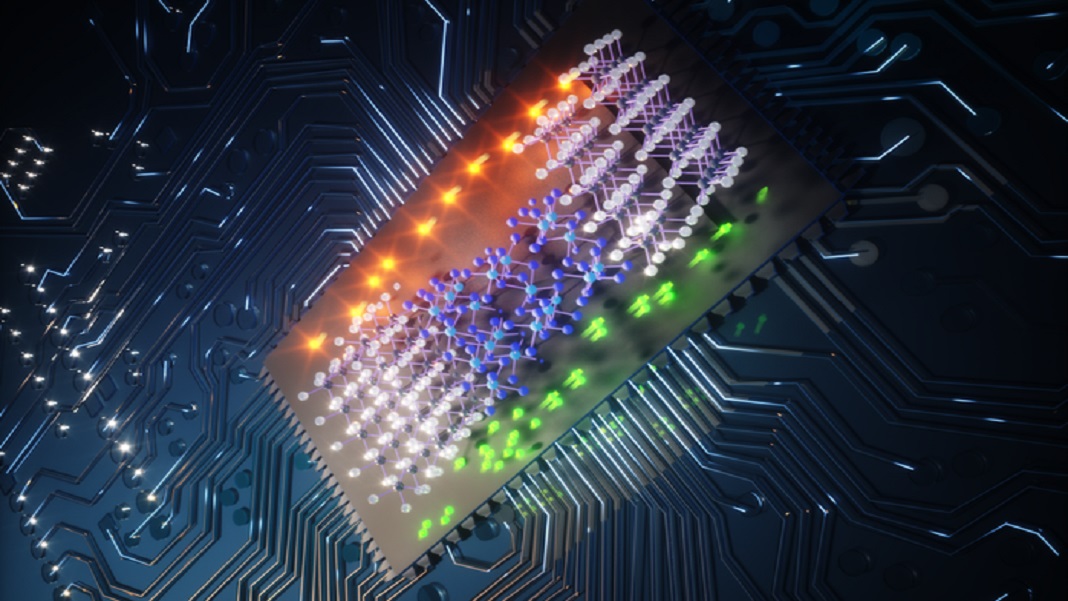 Today’s computers guzzle large amounts of electricity, raising concerns about the climate impact of technology. A breakthrough in superconducting electronics could reduce the power bill significantly, while also making computers far faster.
Today’s computers guzzle large amounts of electricity, raising concerns about the climate impact of technology. A breakthrough in superconducting electronics could reduce the power bill significantly, while also making computers far faster.
Read More
Realizing the STEP Fusion Dream
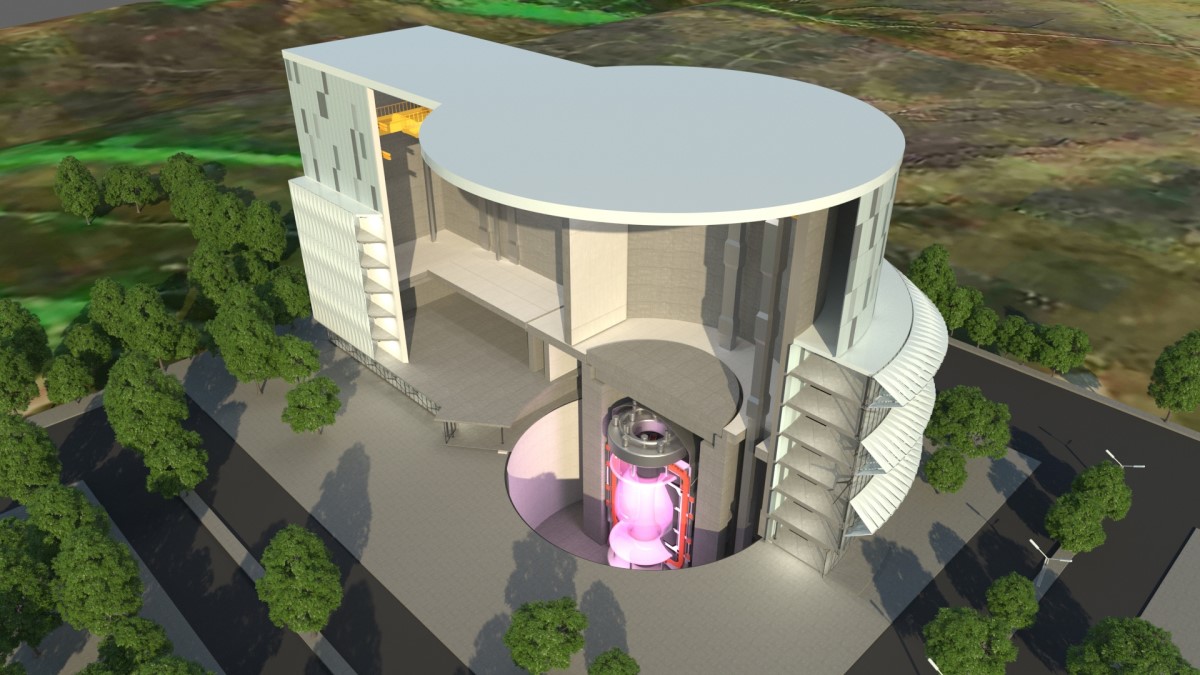 Deliver a UK prototype fusion energy plant, targeting 2040, and thereafter a sustainable, long-term pathway to the commercial viability of nuclear fusion. That’s the ambitious objective – and even more ambitious timeline – confronting the scientists, engineers and project managers currently sweating the details for the conceptual design of the so-called Spherical Tokamak for Energy Production (STEP).
Deliver a UK prototype fusion energy plant, targeting 2040, and thereafter a sustainable, long-term pathway to the commercial viability of nuclear fusion. That’s the ambitious objective – and even more ambitious timeline – confronting the scientists, engineers and project managers currently sweating the details for the conceptual design of the so-called Spherical Tokamak for Energy Production (STEP).
Read More
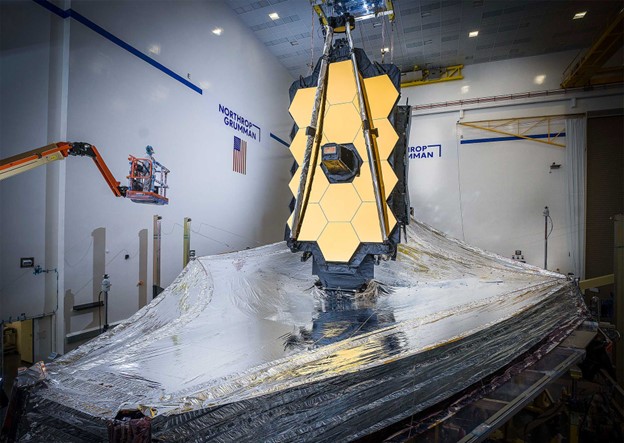 To look back in time at the cosmos’s infancy and witness the first stars flicker on, you must first grind a mirror as big as a house. Its surface must be so smooth that, if the mirror were the scale of a continent, it would feature no hill or valley greater than ankle height. Only a mirror so huge and smooth can collect and focus the faint light coming from the farthest galaxies in the sky — light that left its source long ago and therefore shows the galaxies as they appeared in the ancient past, when the universe was young. The very faintest, farthest galaxies we would see still in the process of being born, when mysterious forces conspired in the dark and the first crops of stars started to shine.
To look back in time at the cosmos’s infancy and witness the first stars flicker on, you must first grind a mirror as big as a house. Its surface must be so smooth that, if the mirror were the scale of a continent, it would feature no hill or valley greater than ankle height. Only a mirror so huge and smooth can collect and focus the faint light coming from the farthest galaxies in the sky — light that left its source long ago and therefore shows the galaxies as they appeared in the ancient past, when the universe was young. The very faintest, farthest galaxies we would see still in the process of being born, when mysterious forces conspired in the dark and the first crops of stars started to shine.
Read More
SLAC’s Superconducting X-ray Laser Reaches Operating Temperature Colder Than Outer Space
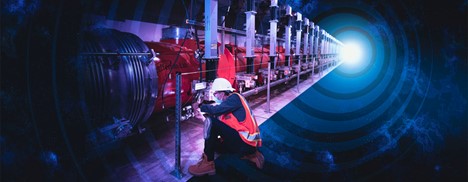 Nestled 30 feet underground in Menlo Park, California, a half-mile-long stretch of tunnel is now colder than most of the universe. It houses a new superconducting particle accelerator, part of an upgrade project to the Linac Coherent Light Source (LCLS) X-ray free-electron laser at the Department of Energy’s SLAC National Accelerator Laboratory. The facility, LCLS-II, will soon sharpen our view of how nature works on ultrasmall, ultrafast scales, impacting everything from quantum devices to clean energy.
Nestled 30 feet underground in Menlo Park, California, a half-mile-long stretch of tunnel is now colder than most of the universe. It houses a new superconducting particle accelerator, part of an upgrade project to the Linac Coherent Light Source (LCLS) X-ray free-electron laser at the Department of Energy’s SLAC National Accelerator Laboratory. The facility, LCLS-II, will soon sharpen our view of how nature works on ultrasmall, ultrafast scales, impacting everything from quantum devices to clean energy.
Read More
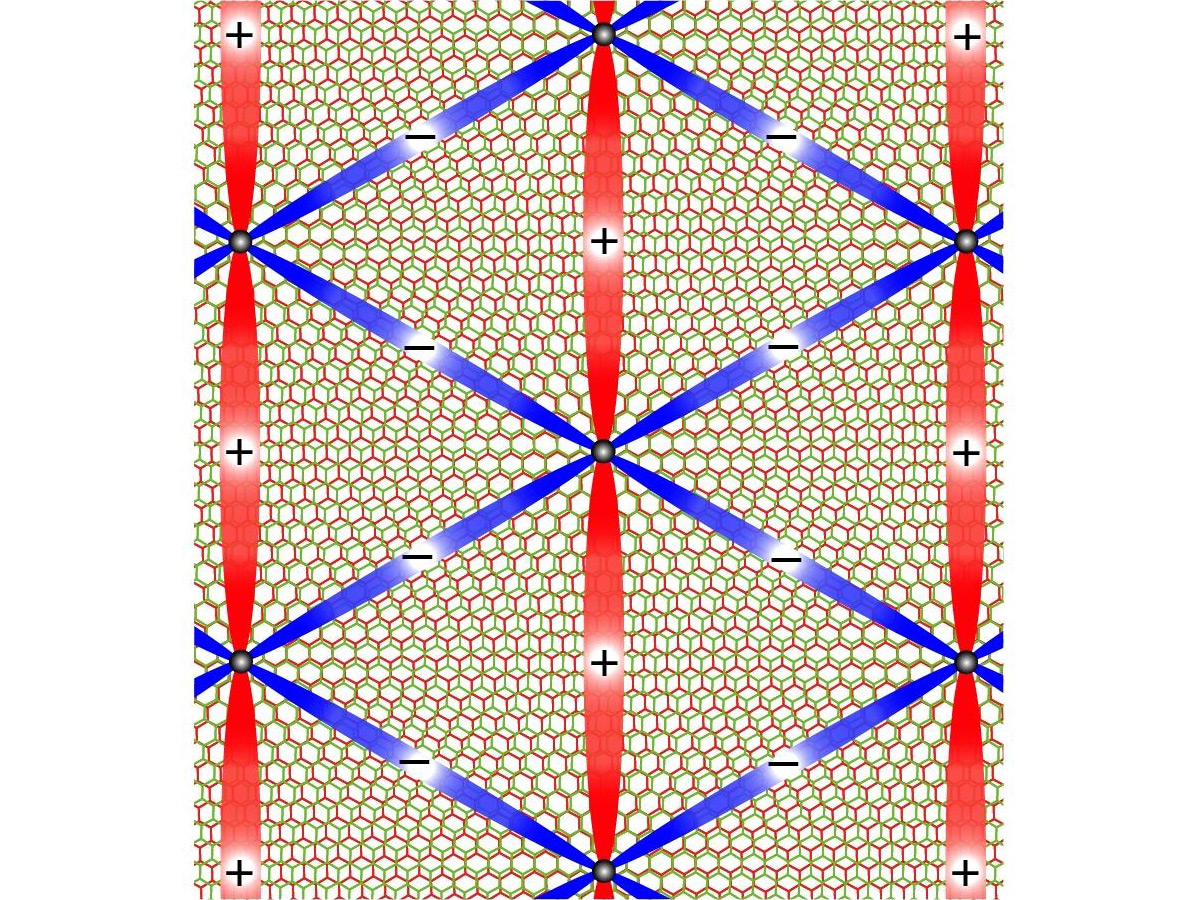 Superconductors are materials that conduct electrical current with almost no electrical resistance at all. This property makes them particularly appealing for a variety of applications, including loss-less power cables, electric motors and generators, and powerful electromagnets that can be utilized for MRI imaging and magnetic levitating trains. Nagoya University researchers have now detailed the superconducting properties of a new class of superconducting material, magic-angle twisted bilayer graphene.
Superconductors are materials that conduct electrical current with almost no electrical resistance at all. This property makes them particularly appealing for a variety of applications, including loss-less power cables, electric motors and generators, and powerful electromagnets that can be utilized for MRI imaging and magnetic levitating trains. Nagoya University researchers have now detailed the superconducting properties of a new class of superconducting material, magic-angle twisted bilayer graphene.
Read More
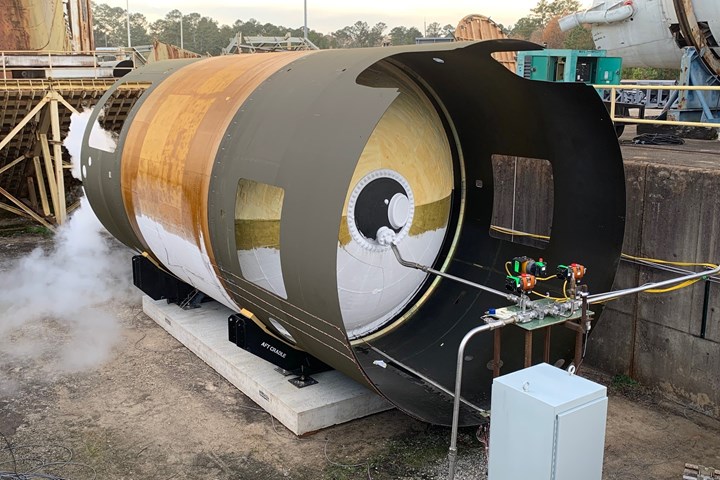 Boeing’s groundbreaking cryogenic fuel tank and Airbus’s hydrogen-powered jet engine bring promise to the future of aviation. A new type of cryogenic tank, designed and manufactured by Boeing, completed a critical series of tests at NASA’s Marshall Space Flight Center at the end of 2021. The successful test campaign advances the large, fully composite, linerless tank for safe and ready use in aerospace vehicles. The reusable tank shell was originally constructed as flight hardware for the Experimental Spaceplane Program of the Defense Advanced Research Projects Agency (DARPA).
Boeing’s groundbreaking cryogenic fuel tank and Airbus’s hydrogen-powered jet engine bring promise to the future of aviation. A new type of cryogenic tank, designed and manufactured by Boeing, completed a critical series of tests at NASA’s Marshall Space Flight Center at the end of 2021. The successful test campaign advances the large, fully composite, linerless tank for safe and ready use in aerospace vehicles. The reusable tank shell was originally constructed as flight hardware for the Experimental Spaceplane Program of the Defense Advanced Research Projects Agency (DARPA).
Read More
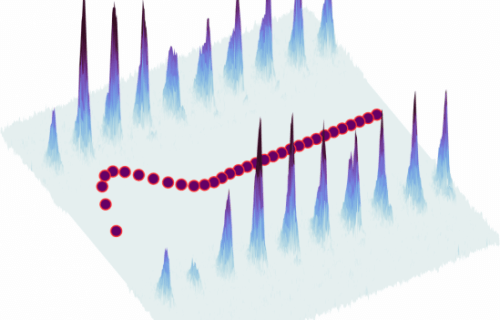 Physicists at UC Santa Barbara (UCSB) have become the first to experimentally observe a quirky behavior in the quantum world: a “quantum boomerang” effect that occurs when particles in a disordered system are kicked out of their locations. Instead of landing elsewhere, as one might expect, they turn around and come back to where they started and stop there.
Physicists at UC Santa Barbara (UCSB) have become the first to experimentally observe a quirky behavior in the quantum world: a “quantum boomerang” effect that occurs when particles in a disordered system are kicked out of their locations. Instead of landing elsewhere, as one might expect, they turn around and come back to where they started and stop there.
Read More
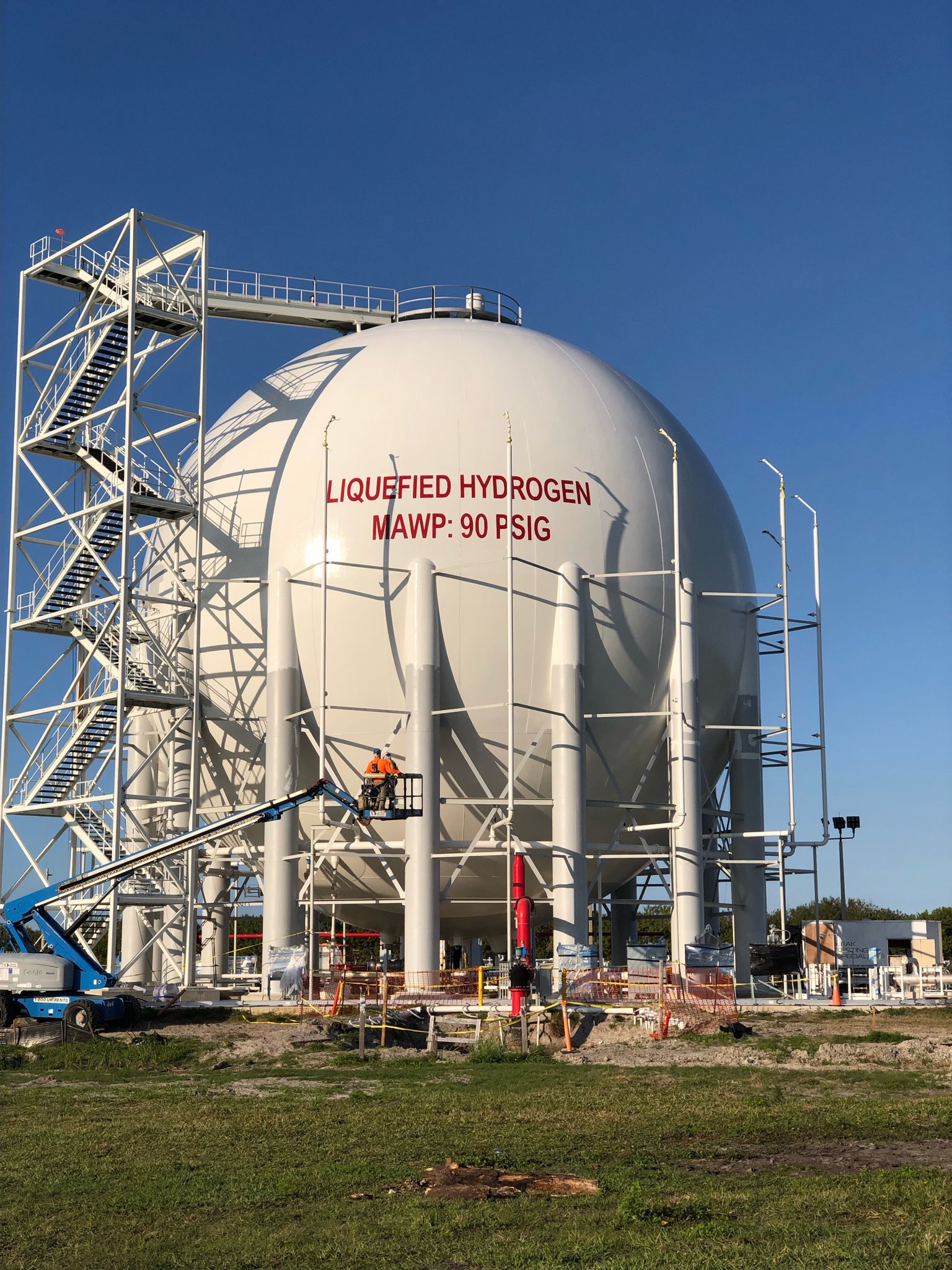 Construction of the world’s largest liquid hydrogen (LH2) storage tank is almost complete at launch pad 39B at NASA Kennedy Space Center (KSC) in Florida. With a usable capacity of 4,732 m3 (1.25 Mgal), this new vessel is roughly 50% larger than its sister tank, which is located 170 m (550 ft) to the southeast. Once the new sphere is fully commissioned, these two tanks will provide a combined LH2 storage capacity of 7,950 m3 (2.1 Mgal) to fuel the new Space Launch System rocket supporting future Artemis exploration missions to the moon and Mars.
Construction of the world’s largest liquid hydrogen (LH2) storage tank is almost complete at launch pad 39B at NASA Kennedy Space Center (KSC) in Florida. With a usable capacity of 4,732 m3 (1.25 Mgal), this new vessel is roughly 50% larger than its sister tank, which is located 170 m (550 ft) to the southeast. Once the new sphere is fully commissioned, these two tanks will provide a combined LH2 storage capacity of 7,950 m3 (2.1 Mgal) to fuel the new Space Launch System rocket supporting future Artemis exploration missions to the moon and Mars.
Read More
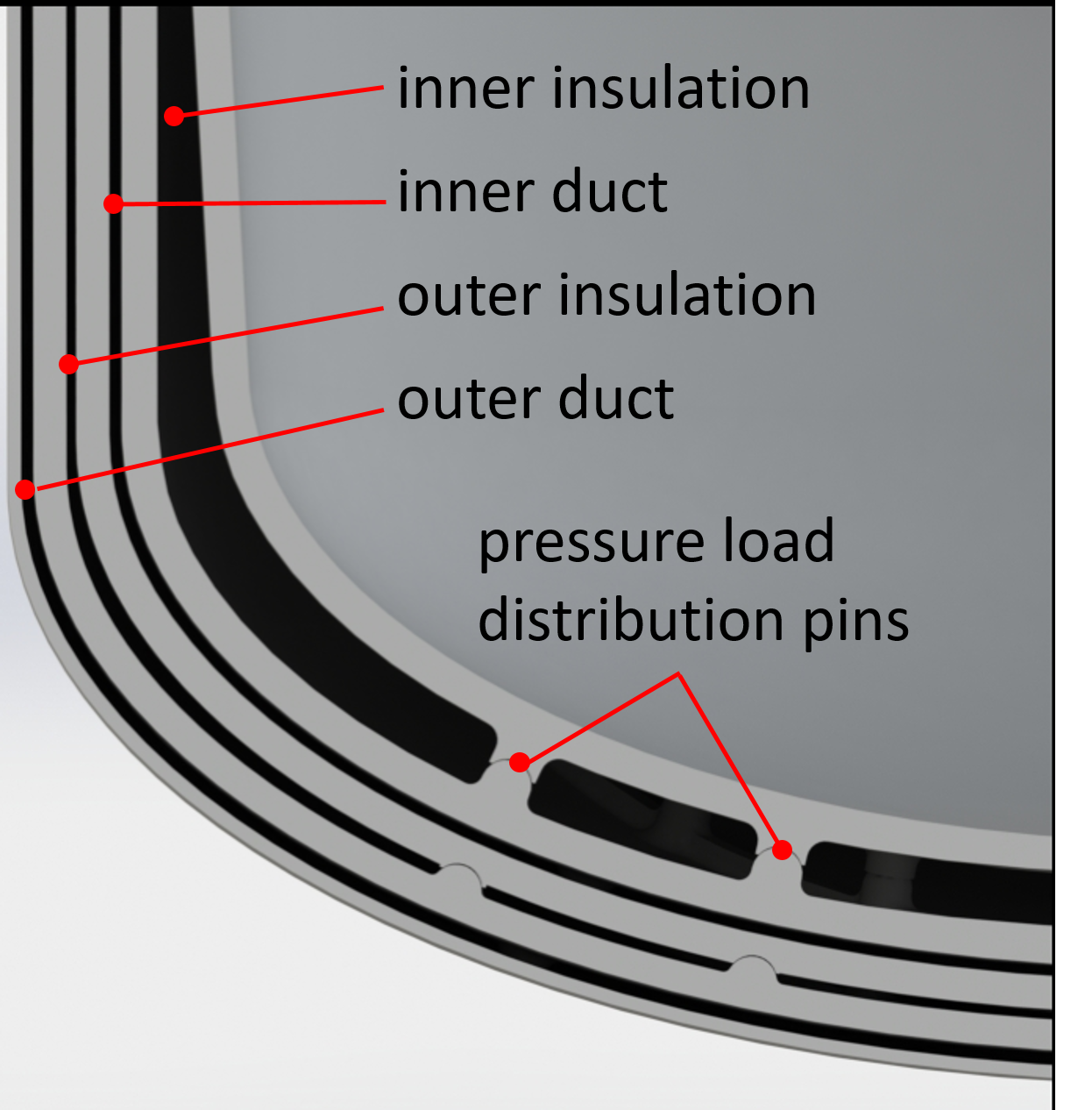 I’m throwing in the towel on academia and starting my own bank. Let’s call it the First Hydrogen Bank. You invest your money, and I’ll bank it as pure hydrogen energy for later use. It’s not only the coolest bank around, but it will be the greenest, fastest (10×), largest (10×), and have the lowest exchange rate among energy banks. Standard terms and fees apply:
I’m throwing in the towel on academia and starting my own bank. Let’s call it the First Hydrogen Bank. You invest your money, and I’ll bank it as pure hydrogen energy for later use. It’s not only the coolest bank around, but it will be the greenest, fastest (10×), largest (10×), and have the lowest exchange rate among energy banks. Standard terms and fees apply:
Read More
2022 Women in Cryogenics
 Each year, CSA celebrates women in the fields of cryogenics, superconductivity, and quantum in our annual Women in Cryogenics feature. This year, we meet eight women across various sub-industries of cryogenics who are not only making great accomplishments and impacts in their fields of work, but also who provide powerful advice for how to attract more women to the world of cryogenics.
Each year, CSA celebrates women in the fields of cryogenics, superconductivity, and quantum in our annual Women in Cryogenics feature. This year, we meet eight women across various sub-industries of cryogenics who are not only making great accomplishments and impacts in their fields of work, but also who provide powerful advice for how to attract more women to the world of cryogenics.
Read More
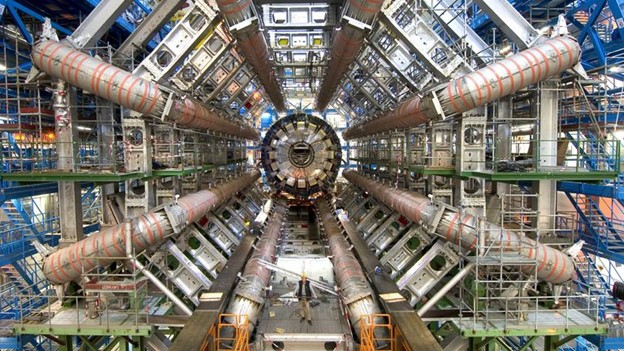 The world's most powerful particle accelerator—the Large Hadron Collider (LHC)—has sprung back to life after a three-year shutdown. After planned maintenance and upgrades, the Large Hadron Collider has been turned back on and will shortly start another run of cutting-edge experiments. The LHC, in Switzerland, was switched off in December 2018 to let scientists and engineers from around the world make it even more powerful. The accelerator at the European Organization for Nuclear Research (CERN) accelerates subatomic particles to almost the speed of light, before smashing them into each other.
The world's most powerful particle accelerator—the Large Hadron Collider (LHC)—has sprung back to life after a three-year shutdown. After planned maintenance and upgrades, the Large Hadron Collider has been turned back on and will shortly start another run of cutting-edge experiments. The LHC, in Switzerland, was switched off in December 2018 to let scientists and engineers from around the world make it even more powerful. The accelerator at the European Organization for Nuclear Research (CERN) accelerates subatomic particles to almost the speed of light, before smashing them into each other.


